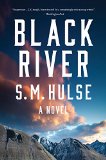Summary | Excerpt | Reading Guide | Discuss | Reviews | Beyond the Book | Read-Alikes | Genres & Themes | Author Bio

A Novel
by S.M. HulseThis article relates to Black River
In Black River, Wes's father made a handmade fiddle for his son. This treasured belonging supports many of the story's themes. The fiddle itself is a multi-sensory object. Beyond its key function of making music, it is also visually beautiful, and provides a tactile and kinesthetic release for Wes.
A fiddle and a violin are pretty much the same instrument. Although there can be variance in playing methodology and the set-up of the instrument (including the strings, tuners and bridge), the difference is most significantly a matter of perception and cultural use—and the type of music played. A musician playing classical music is more likely to call the instrument a violin, while a fiddler plays folk music and bluegrass. Or, as is said, "No one minds if you spill beer on a fiddle."
 The tools needed to build a violin are not particularly expensive or specialized, so as long as an individual has a fair skill level for woodworking. However it is a lengthy, multi-step process requiring great patience and endurance, and the top luthiers spend a lifetime mastering their craft.
The tools needed to build a violin are not particularly expensive or specialized, so as long as an individual has a fair skill level for woodworking. However it is a lengthy, multi-step process requiring great patience and endurance, and the top luthiers spend a lifetime mastering their craft.
Tonal quality is determined by:
Each handmade instrument has its own tone and personality. Although there are some standard procedures, there is no way to create precisely the same instrument. As part of a living thing, each piece of wood is slightly different from another, and each and every cut and stroke makes an impact on the final product. And then, each instrument performs differently depending on the musician.
Additional Information
Professional musicians were given a test to see if they could determine the difference between a Stradivarius violin and one made in 1980. See if you can!
Picture of labeled violin from The Violin Guide
Filed under Music and the Arts
![]() This "beyond the book article" relates to Black River. It originally ran in February 2015 and has been updated for the
January 2016 paperback edition.
Go to magazine.
This "beyond the book article" relates to Black River. It originally ran in February 2015 and has been updated for the
January 2016 paperback edition.
Go to magazine.
Give me the luxuries of life and I will willingly do without the necessities.
Click Here to find out who said this, as well as discovering other famous literary quotes!
Your guide toexceptional books
BookBrowse seeks out and recommends the best in contemporary fiction and nonfiction—books that not only engage and entertain but also deepen our understanding of ourselves and the world around us.